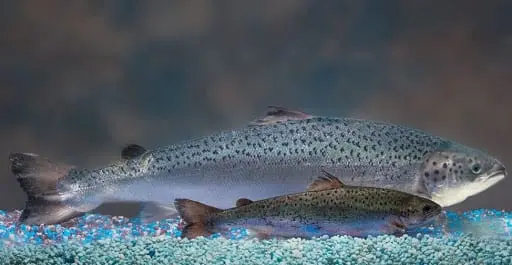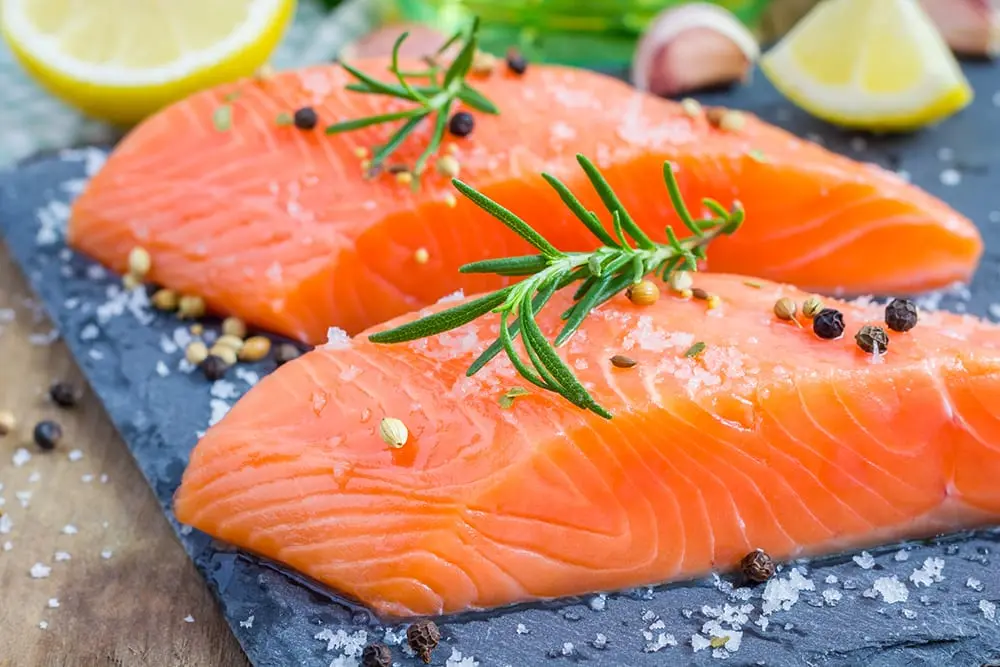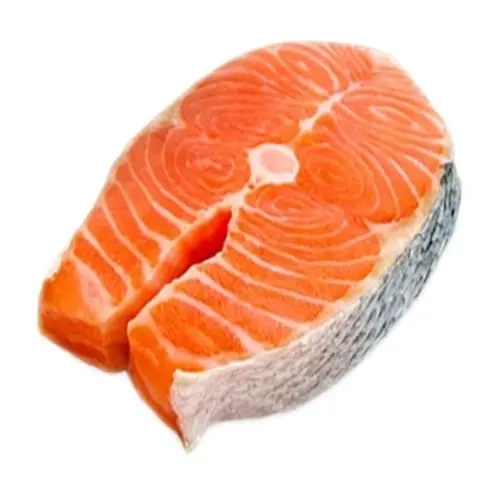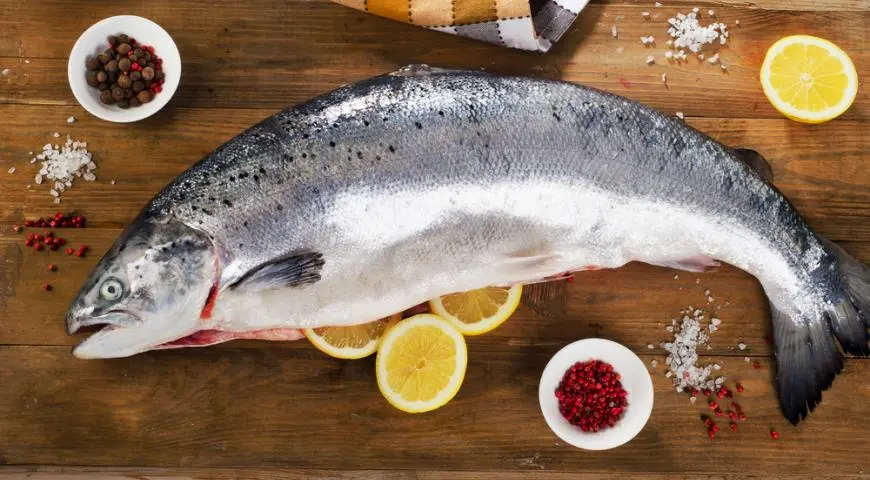Contents
Who doesn’t like redfish? The caviar is worth special attention! Unfortunately, most people know little about the salmons themselves, their way of life, and which species are actually salmon. From this post, you will learn what kind of fish salmon is, what types of salmon exist, and how they differ.
Quite often, people are interested in what kind of fish it is. Let’s immediately determine that salmon is any fish from two genera of the salmon family (Salmonidae) – the genus of Pacific salmon (Oncorhynchus) and the genus of noble (Salmo). Sometimes the word “salmon” is directly included in the trivial names of some of these fish species, for example, steelhead salmon – mykiss (Oncorhynchus mykiss) or Atlantic salmon (aka noble) – better known as (Salmo salar). Perhaps most often, people say salmon, meaning a specific species.
The word “salmon” itself comes from the Indo-European word that means “spotted,” “speckled.” Salmonidae’s name comes from the Latin root salio – to jump and is associated with spawning behavior (details below).
Salmon species

In addition to the two genera of this fish, the salmon family also includes taimen, lenok, grayling, char, whitefish, and pali. Again, here we are talking only about salmon – Pacific (Oncorhynchus) and noble (Salmo). Below, there is a brief description and the main differences between these genera.
Pacific salmon (Oncorhynchus).
This group includes pink salmon, chum, coho, sima, sockeye, chinook, and several American types. Representatives of this genus spawn once in a lifetime and die immediately after spawning.
Unlike their Pacific counterparts, Noble, or real (Salmo), after spawning, as a rule, do not die and can reproduce several times during their lives. This group of salmon includes the well-known salmon and many species of trout.
The benefits of salmon

Many studies have shown that increasing consumption of fish and seafood, such as salmon, significantly reduces the risk of obesity, diabetes, and cardiovascular disease.
According to the National Nutrient Database, USA, 85 g of cooked salmon contains:
- 133 calories;
- 5 g fat;
- 0 g carbohydrates;
- 22 grams of protein.
- The same amount of cooked salmon also provides:
- 82% of the daily requirement for vitamin B12;
- 46% selenium;
- 28% niacin;
- 23% phosphorus;
- 12% thiamine;
- 4% vitamin A;
- 3% iron.
Fish and seafood are especially important for providing the body with omega-3 fatty acids.

Scientific proof of benefits
William Harris, director of the Nutrition and Metabolic Disease Research Institute of the University of South Dakota, USA, states that the level of omega-3 fatty acids in the blood has a greater influence on the risk of developing cardiovascular disease, total fat, or fiber. The higher the omega-3 level, the lower the risk of cardiovascular disease and death from them, and vice versa. And 85 grams of salmon can provide us with more than 1,500 mg of omega-3.
Selenium is an essential component for the normal functioning of the thyroid gland. A meta-analysis showed that people with thyroid diseases have a selenium deficiency. When selenium reserves are replenished, the course of the disease improves and the severity of most symptoms decreases.
According to the National Institute on Alcohol Abuse and Alcoholism, USA, omega-3 fatty acids also reduce aggression, impulsivity, and depression in adults. The level of these acids in children is also associated with the severity of mood and behavior disorders, for example, in some types of attention deficit hyperactivity disorder.
A long-term study from the UK found that babies born by women who ate at least 340 grams of fish per week during pregnancy showed higher IQ levels, better social skills, and better fine motor skills.
Simultaneously, the consumption of at least one fish dish by people aged 65–94 reduces the risk of developing Alzheimer’s disease by 60% compared to those who eat fish rarely or not at all.
How to choose and store
Deep dents on carcasses are a reliable indicator of good quality. They appear when fresh and sometimes live fish on board the trawler and enters the freezer. The carcasses pressed into each other – freeze. If you see such dents, it means that the seller had never defrosted the fish before. After defrosting, all dents will straighten out, and the seller will not be able to recreate them.
How to cook

All salmonids have delicious and tender meat, practically devoid of intermuscular bones. The fat content of the meat of some salmon reaches 27% percent, and then it tastes just magical buttery.
It is impossible to list all the dishes that are people make around the world from salmon fish. Its meat is popular fresh (sometimes raw), salted, smoked, dried, boiled, fried, and canned.
However, only when salted and cold smoked – this fish retain the greatest amount of vitamins. The most famous variant of salmon salting is the Scandinavian “gravlax,” when fish is salted in a mixture of salt, sugar, spices, and finely chopped dill. The addition of strong local alcohol – aquavit – allow this fish to last longer.
Excellent cold-smoked fish they obtain from chum salmon, pink, chinook, and sockeye salmon. But hot smoked foods they mainly make from pink salmon, since they catch such a huge amount of this fish during a short time, it is impossible to save the entire catch not to immediately smoked it. Cold smoked redfish is always a welcome guest at any table.
However, do not forget that fresh salmon meat gives wonderful grilled “steaks”, delicious fish stews, delicious and juicy whole-baked salmon.
Many soups include all types of salmon: chowder, fish soup, hodgepodge, mashed soups.
Salmon with lemon, capers and rosemary baked in foil

Ingredients for the recipe:
- 440 g (4 servings 110 g each) skinless salmon fillet, approximately 2.5 cm thick.
- 1/4 Art. extra virgin olive oil
- Sea salt and freshly ground black pepper
- 1 tbsp. l. chopped fresh rosemary leaves
- 4 lemon slices
- 4 tbsp. l. lemon juice (from about 1 large lemon)
- 8 Art. l. fortified table red wine Marsala
- 4 tsp capers washed
Cooking recipe:
- Preheat a grill pan over medium-high heat, or preheat a gas or charcoal grill. Place each piece of salmon on a piece of foil large enough to wrap the fish completely.
- Brush the fish with olive oil on both sides, season with 1/2 teaspoon each. Salt and pepper, sprinkle with rosemary. For each piece of fish, put 1 slice of lemon, pour 1 tbsp. l. lemon juice and 2 tbsp. l. wine, sprinkle with 1 tsp. Capers.
- Wrap tightly with foil. Place the foil envelopes on the preheated grill rack and cook for 8-10 minutes until half cooked.
- Place the fish in foil on a plate or shallow bowl and serve. Let everyone open the envelope themselves.
- Enjoy your meal!










samaki huyu anapatikana wapi huku tanzania!